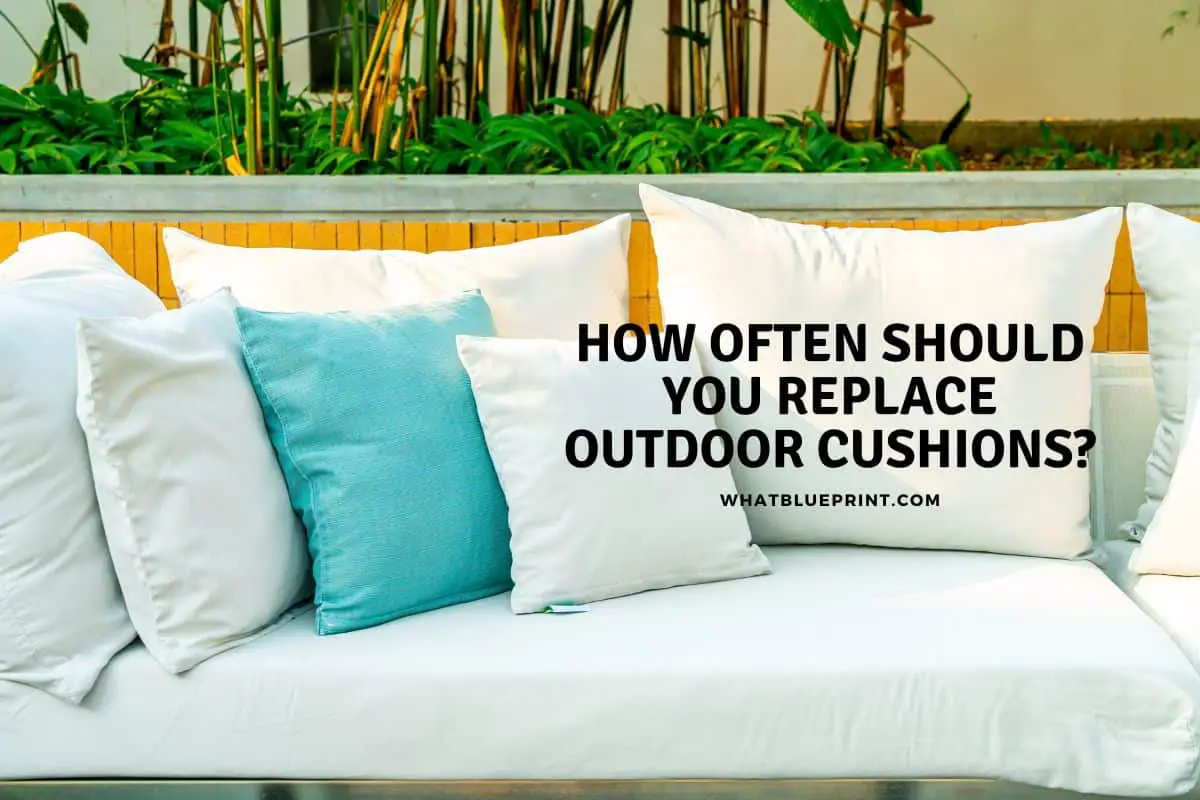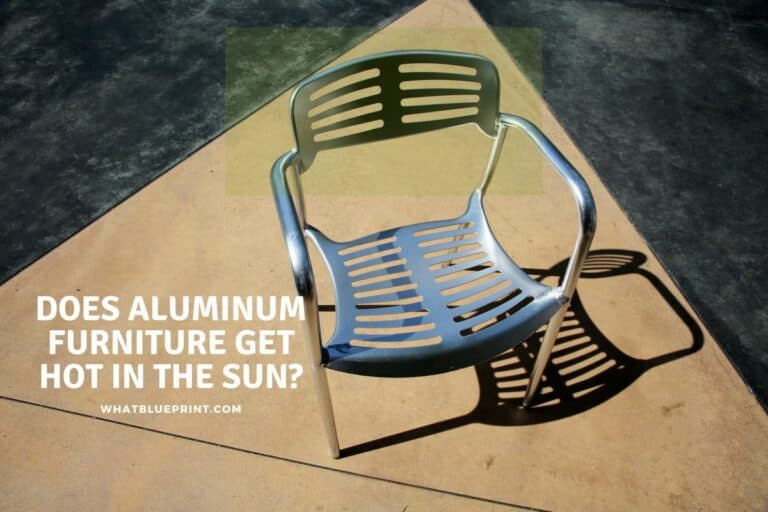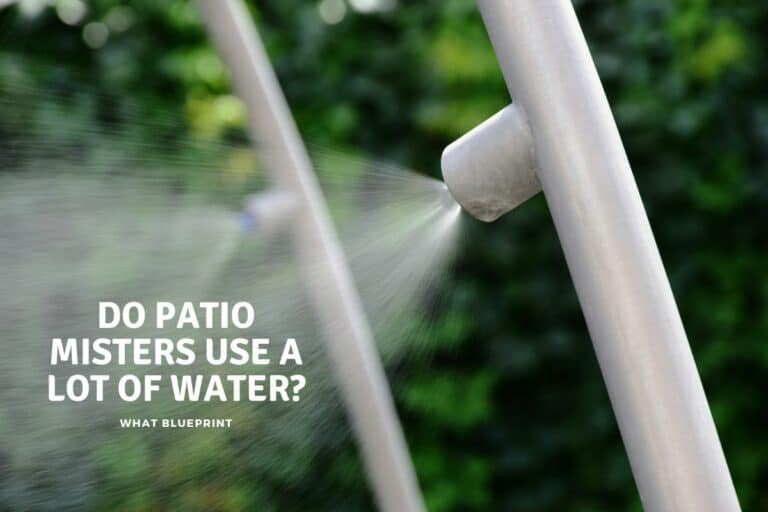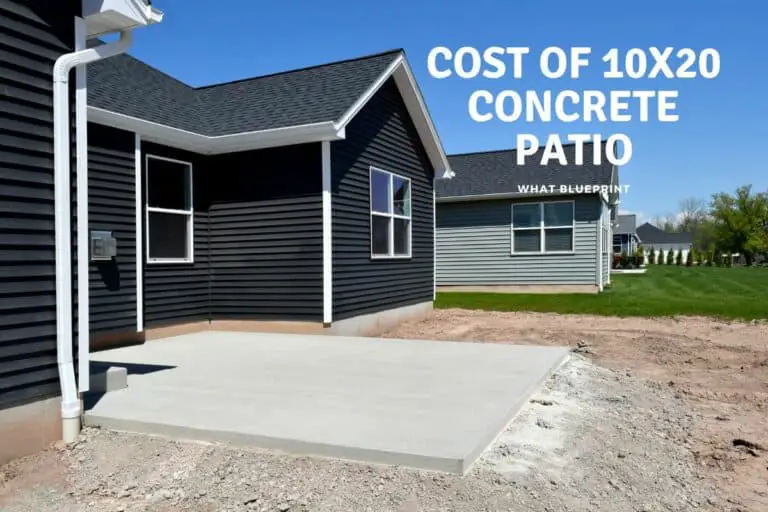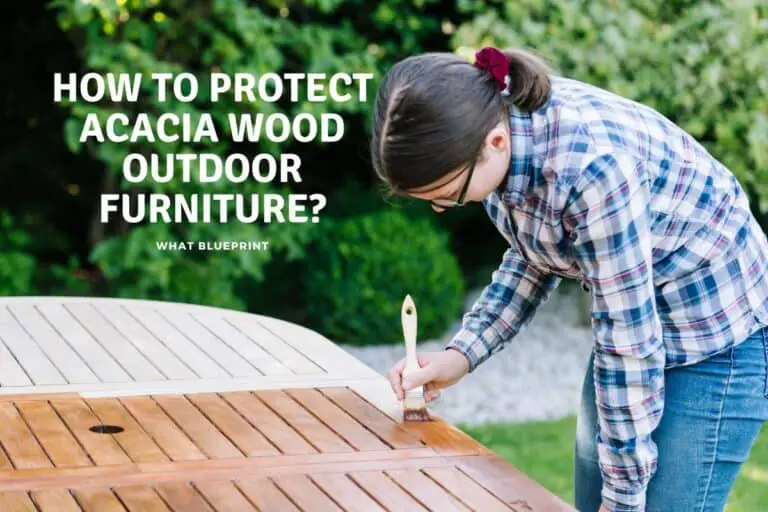How Often Should You Replace Outdoor Cushions?
Almost every home has an outdoor area for leisure activity, and we’ve also designed our houses to support this. Most of the furniture that we use is cushioned to provide comfort. The question now is how do we best maintain our outdoor spaces?
A good rule of thumb is to replace outdoor cushions every five years. Outdoor cushions should be cleaned every 1-2 weeks, depending on how often they are used. Ensuring a suitable outdoor environment can help increase your cushions’ lifespan and reduce cleaning.
Outdoor cushions are quite vulnerable since fabrics are typically absorbent. To make the most out of our outdoor spaces, we’ll need to design and build them well. The best way to do this is through understanding what exactly happens in the outdoors and how that interacts with the furniture we use.
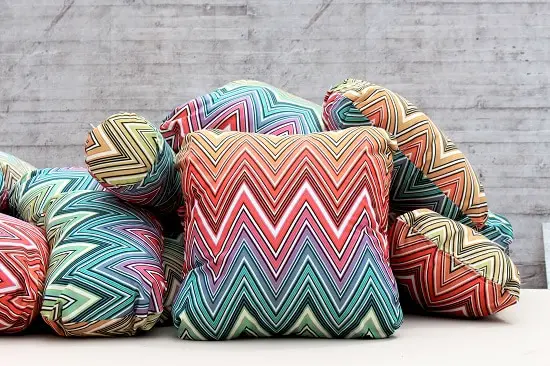
How Often Should You Replace Outdoor Cushions?
The five-year lifespan of outdoor cushions depends on how well you care for them through good maintenance practices and intelligent design decisions. For something as delicate as cushions, it’s essential to protect them from damage.
Outdoor cushions are specifically made to be much more resilient compared to indoor ones.
The main threat against fabric is water, which causes either smells or molds to form, which is why outdoor cushions are designed not to hold water.
Aside from that, outdoor cushions are also designed to withstand heat. More often than not, most homes get hit by direct sunlight here and then. Although heat can sanitize objects (in some instances), it can also cause a reaction with water to increase humidity in the area. Aside from that, continuous exposure to sunlight can cause dye pigments to fade, thus aging our cushions.
Other than environmental factors, you also have to consider the activity of people. Cushions are susceptible to stains or smells from typical outdoor activities like mud after playing football, dust from nearby DIY projects, the smells of a barbecue, etc.
Making our cushions last longer boils down to understanding how they’re made, where they’re placed, and how they’re used.
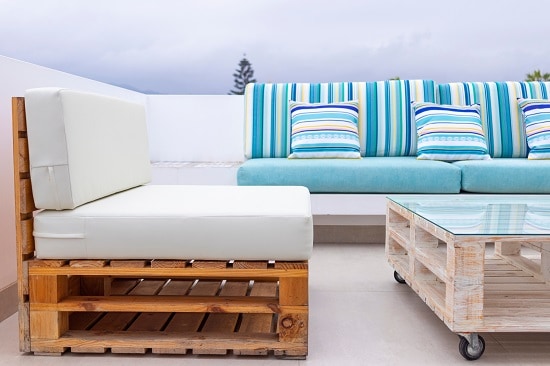
How can I make my outdoor cushions last longer?
Buying the right cushions for our outdoor furniture takes time and effort. With that, we want to keep them in their best appearance and condition. Making our outdoor cushions last longer depends on two factors:
Maintaining your cushions
Maintaining cushions boils down to cleaning and good practices. You should clean your pillows at least once a week to keep them free from odors and stains.
Placing them in the right place
As much as possible, we want to avoid unnecessarily exposing your cushions to the elements. We can somewhat predict the weather, and we can predict how our house interacts with it, so it only makes sense that we adjust our spaces accordingly.
For example, if you see that water tends to pool near your porch, then you should probably keep your cushions farther away from it.
Choosing the right cushion
Not every outdoor cushion is made the same. Some materials are more resistant to certain environmental factors than others. Picking the correct pillow and material will make maintenance much easier for you.
Aside from just making your outdoor cushions last longer, these practices will also make them feel much better to use. The primary purpose of cushions is to make furniture more comfortable to use, so it only makes sense that we know how to make them serve that function well.
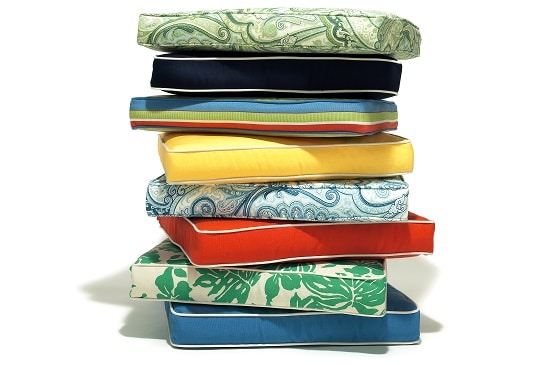
What are outdoor cushions made of?
We’ve mentioned that outdoor cushions are explicitly built to handle outdoor conditions. There are many ways that these could be done, but we primarily want to focus on the material that it’s made out of.
The material of the cushion will determine the following:
- How comfortable it will feel
- How long the cushion will last
- How easy it is to clean
- How well the cushion can handle weathering.
| Polypropylene Fabric | * Works great for keeping dry and holding color when exposed to direct UV light. * Since this is practically plastic made into fiber, you can expect easy cleaning and odor-free usage. |
| Acrylic Fiber | * Acrylic fiber is commonly used for clothes and knitting. Acrylic holds color well and can be made to have the feel of other fabrics(such as cotton). * Take note that acrylic can hold some electric charge, which can end up causing shocks. |
| Polyester | * Polyester fabric is used in most modern clothes. They offer both stretch and stiffness that makes it presentable at all times. The main issue with polyester is its feel, which can feel cheap at certain times. |
| Olefin | * Olefin can be likened to acrylic, except that you’ll find a wider variety of cushion designs. |
Manufacturers specifically make outdoor furniture to handle all kinds of weather conditions. In general, all outdoor fabrics are light and capable of drying up quickly because they are usually made of synthetic fibers.
Types of outdoor cushions
If you think about it, we use all kinds of cushioning in our outdoor spaces. Whether that be cushioning for our chair seats, couches, and in some cases, even beds, it’s essential to know how these different parts of our homes react.
Chair Cushions
Chairs will usually need cushions for their seats and, in some cases, even the back support. A consideration for chairs is to get the same cushioning for each one to get a uniform look.
You’ll probably be going with a plain smaller, sized pillow as chairs need pillows more for comfort rather than decoration. It’s also helpful to get cushions that can easily be tied to the chair to avoid movement or getting misplaced.
Couch Cushions
Sofas for the outdoors are quite different compared to indoor couches. Unlike indoor couches that are already fully cushioned, outdoor sofas usually only have to cushion the parts that people use (the backrest and the seat).
For couches, you’ll need to get a long pillow or multiple smaller ones to cushion the seating area fully. You can opt to add smaller decorative pillows to make your sofa look more filled.
Generally, outdoor furniture is already specifically designed to handle environmental conditions. It’s important to you also maintain your outdoor furniture to keep them from damaging your cushions (Ex. Wood stains, grass stains, etc.).
Different types of cushions for Outdoors
To look for the best cushion for your outdoor spaces, we will also need to look into the different types of cushions.
It may not seem like much, but the design of your cushion (in terms of shape and size) will play a significant role in how comfortable it would be. The last thing we would want is to get cushions that don’t match our outdoor furnishers.
Lumbar Cushions
As the name implies, lumbar cushions are designed to support the lower part of your spine. This cushioning is more on functionality than design, so you’ll often find them in plain fabrics.
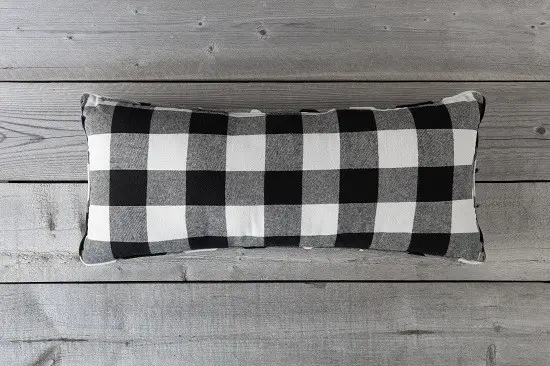
Box Cushions
Box cushions are often the base used in most couches and chairs. These cushions are uniform in shape and are often made with a connected top and bottom.
Throw Cushions
Throw cushions are often the decorative pillows we can find on couches. This type of cushion tends to be heavier in design, with embroideries and such.
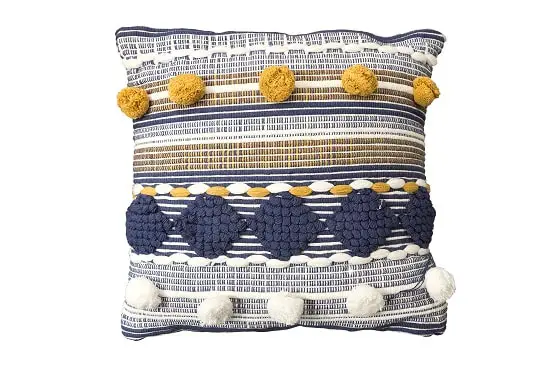
Bolster Cushions
Bolster Cushions are often “hotdog” shaped and support our necks.
For people who are really into interior design, cushions play a significant role in framing furniture. Cushions are often mixed, matched, and layered to complement each other while still providing comfort for their users.
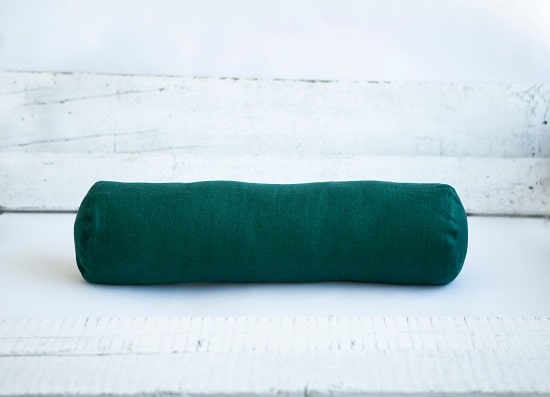
Designing with outdoor cushions
If you find yourself constantly using your outdoor spaces, it might be a good idea to start thinking about how to make it all look better together. Cushions are one way of making our furniture match with the rest of the room, as it is another component of our furniture’s design.
Here are a few things to keep in mind when picking out cushions that would compliment your outdoor spaces:
- Size
The sizing of your cushions will determine how well it fits into your furniture and their assigned use.
Your biggest cushions will often serve as the base for your furniture, while the smaller ones will be for people to use.
- Texture
Textures play a role in the feel of your cushions and how it blends in with the rest of your spaces. More often than not, textures are usually determined by the materials you use unless manufactured otherwise. You can mix and match textures to give your furniture more character.
- Color
The color of your cushions will determine how well it looks. You can either go with complementary colors, contradicting colors, analogous, greyscale, etc.
Remember that for outdoor cushions, it might be wiser to go with colors that don’t show stains and can still look good even when faded.
- Shape
A pillow shape generally determines how it will support someone when it’s leaned on. Certain furniture pieces can also be built for a specific shape of cushion in mind( square, circular, etc.)
For pillow shapes, it’s often best to keep it simple for outdoor spaces with basic shapes(square, triangle, circle, etc.).
You’ll be using your outdoor cushions for at least five years, so it only makes sense that you get the ones that match your outdoor spaces the most.
A good tip is to buy matching cushions for all your furniture, so cleaning and maintenance will generally be the same while at the same time providing a harmonious look for your outdoor spaces.
How to Maintain Outdoor Cushions
Although outdoor cushions are already made to last, it’s a good practice always to keep them in their best condition. It’s unavoidable that some spills or weathering will occur eventually. We should be ready to clean our cushions if needed.
Just like for any other fabric, different types of stains will require different methods of cleaning it.
Luckily, most items you need to clean outdoor cushions are already present in most households.
Here’s a step-by-step guide to cleaning outdoor cushions:
- Clearing Debris
The outdoors can get quite dusty, and these particles tend to end up inside our cushions.
You’ll need to vacuum and beat out your cushions to release any built-up dirt inside them. This is vital as any leftover dirt while cleaning can get smeared into your pillows.
- Cleaning
You’ll use a soft-bristle brush to remove any dirt, and grime latched onto your cushions. You can use your typical fabric cleaners or detergents as your cleaning agent for this. Still, it’s recommended to use softer materials.
- Rinsing
Once all the dirt and grime are brushed away, you’ll need to remove the detergent and leftover debris with water. Using a hose to clean your cushions, rather than soaking them in water, is best to push out any leftover debris.
- Drying
Outdoor cushions are designed to dry quickly. The best way to dry them is through air drying underneath direct sunlight. Make sure that you dry you’re If you want to speed up the process, and you can opt to cover up your pillows first with towels to absorb any leftover moisture.
- Protection
Most outdoor cushions have fabric coatings that protect against moisture and stains. Even if you’re using synthetic fibers, additional protection is still good.
For weekly maintenance, you can opt just to vacuum any debris. Outdoor cushions should be fully washed and cleaned around once a month. You can also opt to have spare cushion casings in case you want to reduce the frequency of maintenance work.
We have loads of articles on the site about making your outdoor space more attractive and this includes a set on cushions and fabrics you can do a search or pick some from the list below.
Conclusion
Outdoor cushions are designed to withstand the elements and last around five years. Maintenance work should be done every week, while you should thoroughly clean your cushions monthly. If you want your cushion last, it’s important to design your outdoor spaces to minimize their exposure to environmental factors.
Sources
- https://www.lifestorage.com/blog/storage/how-to-store-patio-cushions/
- https://www.masterclass.com/articles/polyester-fabric-guide#what-are-the-characteristics-of-polyester-fabric
- https://www.terrysfabrics.co.uk/blogs/cushions-buying-guide/types-sizes-shapes-colours-of-cushions
- https://www.canva.com/colors/color-wheel/
- https://www.bhg.com/home-improvement/porch/outdoor-rooms/how-to-clean-outdoor-cushions/

